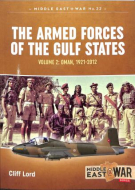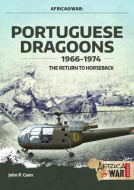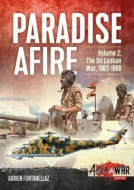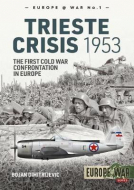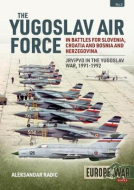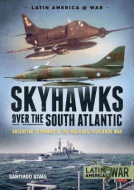
- Agriculture
- Architecture & Design
- Arts & Photography
- Biography
- Business
- Calendars and Diaries
- Childrens (All)
- Childrens (Illustrated)
- Childrens (Picture flats)
- Childrens (Te Reo)
- Classics
- Cooking, Food & Drink
- Craft & Hobbies
- Design (Art / Graphics)
- Design (Interiors)
- Education
- Fashion
- Fiction & Literature
- Fiction - Young Adult
- Gift Ideas
- Health & Wellbeing
- History
- Home & Garden
- Humour & Gift
- Instead of a Card Poems
- Military
- Music
- New Zealand
- NZ (History)
- NZ (Landscapes)
- NZ (Pictorial)
- Poetry
- Reference
- Religion & Faith
- Science & Nature
- Sport & Recreation
- Stationery
- Taschen : 40th Anniversary Edition
- Taschen : BA Basic Art
- Taschen : BU Bibliotheca Universalis
- Te Reo Māori
- Transport
- Travel
History (457)
|
The Military and Police Forces of the Gulf States Volume 2 (Middle East@War 22)
ISBN: 9781912866069 Author: Cliff Lord Publisher: Helion & Company This book provides an overview of the military forces of Muscat & Oman and successor State of Oman. Britain and Oman have had various treaties over several cent... This book provides an overview of the military forces of Muscat & Oman and successor State of Oman. Britain and Oman have had various treaties over several centuries brought closer with Britain's involvement in creating the Sultan's Armed Forces. The book covers the Muscat Armed Forces and the Sultan's Armed Forces of Oman, Dhofar Force, plus selected paramilitary forces and the Royal Oman Police Force. The narrative includes regimental and corps histories, and selected military operations. The book also details the contribution made by British seconded and contract personnel who have shaped these forces from the 1920s to the present, through forming, leading, advising and training them. Maps of the areas concerned are provided, along with a glossary of terms and a comprehensive time chart showing the dates of formation and disbandment of units, and if they were merged or reformed into new units. Many photographs are included showing the uniforms and a selection of badges and insignia. The work has been written by Cliff Lord and Dr Athol Yates. Cliff has had published a number of books including a history of the Armed Forces of Aden and the Protectorate, which in some respects is a lead on to this history. This book is a sister companion to The Armed Forces of the Smaller Gulf States also by Cliff Lord and Athol Yates. Bind: paperback Pages: 90 Dimensions: 210 x 297 mm |
$49.99 |
|
|
Portuguese Dragoons 1966-1974 (Africa@War 42)
ISBN: 9781912866281 Author: John P. Cann Publisher: Helion & Company Between 1961 and 1974 Portugal fought a war to retain its African colonies of Angola, Guinea-Bissau, and Mozambique. Collectively known as the Campaigns for Afr... Between 1961 and 1974 Portugal fought a war to retain its African colonies of Angola, Guinea-Bissau, and Mozambique. Collectively known as the Campaigns for Africa, the origin of the conflict stems from the post-World War II atmosphere of nationalism and anti-colonial fervor. The Angolan insurgency began in 1961, followed by unrest in Guinea-Bissau in 1963 and Mozambique in 1964. Portugal's initial actions in Angola were based on foot-slogging by infantry, considered the best method of addressing an insurgency, not only to hunt the enemy but also to keep contact with the population. But in the vast areas of Angola - the majority of which was unsuited to wheeled vehicles - this tactical approach was too painful, and for Portugal the number of troops available was limited. The helicopter was a possible solution, but it was beyond Portugal's finance resources and it had a tendency to fly over those areas where it was vital to communicate with the population and secure its loyalty. When in 1966 the enemy guerrillas sought a new front in eastern Angola, Portugal needed a force that could combine mobility over rough terrain with the ability to engage insurgents, while maintaining strong links with the population. One of the adaptive solutions to this challenge was found in the past: create horse cavalry units in the form of dragoons that were equally trained for cavalry or infantry service, just as their historical predecessors fought. In this particular case, adaptive tactics involved adjusting existing military methods and means from the traditional and available inventory to craft a solution that would deny eastern Angola to insurgents and support the population there. This story is about imaginative thinking that, instead of a 'forced abandonment of the old', led to a 'resurrection of the old.' Bind: paperback Pages: 68 Dimensions: 210 x 297 mm |
$49.99 |
|
|
Showdown in Western Sahara Volume 2 (Africa@War 44)
ISBN: 9781912866298 Author: Tom Cooper Publisher: Helion & Company The former colony of Spanish Sahara saw frequent outbursts of tribal and ethnic rebellions while ruled by the colonial authorities in the late 19th and through ... The former colony of Spanish Sahara saw frequent outbursts of tribal and ethnic rebellions while ruled by the colonial authorities in the late 19th and through the early 20th Century. Its vastness and distances essentially dictated the application of air power in response. While most of these events attracted next to no attention in English-language media, the large-scale operations of the Spanish colonial authorities of the late 1950s became notable at least for the final combat deployment of the famous Messerschmitt Bf.109. Following the Spanish withdrawal from Spanish Sahara in 1975, a major war erupted as Sahrawi nationalists - organized by the POLISARIO front - engaged in guerrilla warfare against Moroccan armed forces deployed to secure the northern part of the country, and Mauritanian forces deployed in the south. Characteristically for this period, POLISARIO's insurgency was often misinterpreted in the West as 'Soviet-influenced', although the rebels never adapted any related frameworks for their operations and tactics, such as those of Mao Zedong. On the contrary, while Algeria at least tolerated their bases on its soil, it was Libya that provided most of the support for the insurgency, eventually enabling it to defeat the Mauritanian military, slightly over a year later. Combined with POLISARIO's raids deep into Mauritania this prompted France to launch a limited military intervention in support. While tactically successful, this proved insufficient: Mauritania withdrew in 1979 after signing a peace treaty. Morocco continued fighting a series of bitter campaigns through 1979 and 1980, until rising costs and casualties prompted its government into developing an entirely new strategy. Construction of extensive earthen fortifications eventually slowed the war down to one of low intensity, only sporadically interrupted by insurgent attempts to achieve at least local successes. With both sides realizing that no solution through an armed conflict was possible, a cease-fire agreement was signed in 1991. However, this conflict still remains unresolved: it merely shifted to civilian resistance. Warfare in Western Sahara has in many ways become exemplary for modern-day counter-insurgency efforts in Africa and elsewhere. This conflict has been falsely declared as a part of some larger, external conflict - the Cold War; in regards of the concept of an insurgency applying motorized forces to deliver often spectacular 'hit-and-run' attacks; and in regards of a conventional military reacting with a combination of earth berms and air power. Illustrated by over 100 photograph as, a dozen maps and 18 colour profiles, Showdown in Western Sahara offers a fascinating study of the military aspects of this conflict, warfare strategies, tactics and experiences with different weapons systems. Bind: paperback Pages: 88 Dimensions: 210 x 297 mm |
$49.99 |
|
|
Paradise Afire Volume 2 (Asia@War 8)
ISBN: 9781912866304 Author: Adrien Fontanellaz Publisher: Helion & Company Upon achieving independence from Great Britain in 1948, the stunningly beautiful island of Ceylon, re-named Sri Lanka in 1972, was expected to become a sort of ... Upon achieving independence from Great Britain in 1948, the stunningly beautiful island of Ceylon, re-named Sri Lanka in 1972, was expected to become a sort of 'South Asian Singapore'. However, stable political order and bright economic prospects proved insufficient to maintain peace. A host of unsolved ethnic conflicts and social inequalities conspired to erupt into an armed conflict in 1971. By 1987, the crisis heated up to the point where the government in New Delhi began exercising fierce pressure upon the Sri Lankan government and the Sri Lankan Tamil insurgents to arrive at a peace deal. In order to help maintain peace, the Indian Peace Keeping Force was deployed on the island. However, with a few weeks, the troops of the Indian Army found themselves involved in a bloody and protracted confrontation with the most powerful of Tamil insurgent movements - the Liberation Tamil Tigers of Elam (LTTE). The peacekeeping operation was thus quickly converted into a military intervention and a bloody quagmire. To make matters even more complex, southern Sir Lanka meanwhile became engulfed in an unprecedented wave of public violence, triggered by the second insurrection of Sinhalese ultra-leftist movement, the JVP. Calling upon extensive studies of the Sri Lankan War, with the help of first hand sources, official documentation and publications from all of the involved parties, this volume provides an in-depth and particularly detailed account of military operations between 1987 and 1990. It is illustrated by over 120 photographs, maps and 12 color profiles. Bind: paperback Pages: 72 Dimensions: 210 x 297 mm Publication Date: 04-09-2019 |
$49.99 |
|
|
Emperors Own (Asia@War 10)
ISBN: 9781912866311 Author: Dagmawi Abebe Publisher: Helion & Company On June 25, 1950, as he was flying back to Washington D.C. to deal with the outbreak of war in Korea, US President Harry Truman thought, "In my generation, this... On June 25, 1950, as he was flying back to Washington D.C. to deal with the outbreak of war in Korea, US President Harry Truman thought, "In my generation, this was not the first occasion when the strong had attacked the weak. I recalled some earlier instances: Manchuria, Ethiopia, Austria. I remembered how each time that the democracies failed to act it had encouraged the aggressor to keep going ahead. Communism was acting in Korea just as Hitler, Mussolini, and the Japanese had acted, ten, fifteen, and twenty years earlier.... If this was allowed to go unchallenged it would mean a third world war." In response to North Korea's invasion of South Korea, the United Nations sent an urgent plea to its members for military assistance. Sixteen nations answered the call by contributing combat troops. Ethiopian Emperor Haile Selassie, a stalwart advocate of collective security, dispatched an infantry battalion composed of his Imperial Bodyguard to affirm this principle which had been abandoned in favor of appeasement when the League of Nations (the predecessor to the United Nations) gave Fascist Italy a free-hand to invade Ethiopia in 1935. The unit designated "Kagnew Battalion" was actually successive battalions which rotated yearly and fought as part of the US 32nd Infantry Regiment, 7th Infantry Division. When they arrived, these warriors from an ancient empire were viewed with suspicion by their American allies as they were untested in modern warfare. Their arrival in Korea also coincided with the desegregation of the US Army. However, the Ethiopians eventually earned the respect of their comrades after countless bloody, often hand-to hand battles, with all three battalions which served during the war earning US Presidential Unit Citations. Remarkably, Kagnew was the only UN contingent which did not lose a single man as prisoner of war or missing in action. Until now, few have heard the story of their stand for collective security and against aggression. The Emperor's Own provides insight into who these men and women were as well as what became of them after the war. Bind: paperback Pages: 96 Dimensions: 210 x 297 mm |
$55.00 |
|
|
At the Forward Edge of Battle A History of the Pakistan Armoured Corps 1938-2016 Volume 2 (Asia@War 11)
ISBN: 9781912866335 Author: Major General Syed Ali Hamid Publisher: Helion & Company At the Forward Edge of Battle is the first ever illustrated history of the Pakistan Armoured Corps. The Pakistan Armoured Corps is based on a unique blend of v... At the Forward Edge of Battle is the first ever illustrated history of the Pakistan Armoured Corps. The Pakistan Armoured Corps is based on a unique blend of values and traditions inherited from its predecessors, and those of the post-Independence national army. The origins of this force can be traced back to the time when the cavalry units of the British India Army were mechanized, in the late 1930s. They were worked up and then deployed extensively during the Second World War, and further moulded during the post-independence period and two wars with India between 1948-1971. By the 1990s, the Pakistan Armoured Corps had evolved into a modern fighting force in thought, organization, and equipment. Based on decades of the author's first-hand experience, extensive research with the help of authentic sources and official documentation, this book provides a detailed and richly illustrated description of the build-up and expansion of the Pakistan Armoured Corps, its culture, organisation, doctrine, equipment, bases, a myriad of events and personalities, and combat operations that shaped it over the last 95 years. At the Forward Edge of Battle, Volume 2, is illustrated with over 100 rare and authentic photographs, 15 colour profiles, and a similar number of maps. Bind: paperback Pages: 136 Dimensions: 210 x 297 mm Publication Date: 10-02-2020 |
$55.00 |
|
|
The Trieste Crisis 1953 (Europe@War 1)
ISBN: 9781912866342 Author: Bojan Dimitrijevic Publisher: Helion & Company The city of Trieste stands as a symbol of the Italian-Yugoslav border dispute in the first decade after the Second World War. The problem included a much larger... The city of Trieste stands as a symbol of the Italian-Yugoslav border dispute in the first decade after the Second World War. The problem included a much larger territory which covers the wider area of Trieste: ranging from the Julian Alps in the north to the base of the Istrian peninsula in the south; in the area where the Italians meet the South Slavs. Moreover, after the Second World War it was an area of confrontation for two ideologies: western democracy and communism. It was the place where the Iron Curtain lay between the two worlds for many decades of the Cold War. Often discussed from the socio-economic point of view, military aspects of the Trieste Crisis remain remarkably under-reported - and not only in the English language. One of the primary reasons is the relative unavailability of relevant Italian and Yugoslav documentation, but also the general focus on political and ethnic issues instead. The Trieste Crisis focusses on military-related affairs in this part of the world from the 'race to Trieste' of May 1945 until the creation of the Free Territory of Trieste and the culmination of tensions between Italy and former Yugoslavia, in October 1953. By the later date, the crisis had reached a point where it resulted in the largest deployment of military forces from both countries. Correspondingly, this work provides a detailed account of the Allied, Italian and Yugoslav military presence in the area befor, and their build-up during this near-war. Paying special attention to the description of the troops involved, their armament and equipment, the heavy weaponry deployed, and aerial and naval forces, The Trieste Crisis is illustrated by more than 150 photographs - most of them never published before - colour profiles and maps, and thus closing a gap in the history of the early Cold War in Europe of the mid-20th Century. Bind: paperback Pages: 80 Dimensions: 210 x 297 mm |
$49.99 |
|
|
The Yugoslav Air Force in the Battles for Slovenia Croatia and Bosnia & Herzegovina 1991-1992 Volume 1 (Europe@War 5)
ISBN: 9781912866359 Author: Aleksandar Radic Publisher: Helion & Company During the late 1980s, the former Socialist Federal Republic of Jugoslavia (SFRJ) - a country dominating the Balkans - experienced a period of major crisis. Led... During the late 1980s, the former Socialist Federal Republic of Jugoslavia (SFRJ) - a country dominating the Balkans - experienced a period of major crisis. Led by the Communist Party, the nation's leadership failed to understand the depth of political changes all over Eastern Europe, and then split along ethic lines. In 1988-1989, ethnic Albanians in the autonomous province of Kosovo began demanding independence: the authorities of the SFRJ reacted by suppressing the resulting demonstrations. In the Federal Republic of Serbia, public opinion slid into nationalism, which the local communist leadership exploited to maintain itself in power. By 1990, nationalistic leaders rose to power in Slovenia and Croatia, and publicly announced their intention to secede these federal republics. Under the heavy shadow of growing war-mongering, politicians from all three sides met to reach settlements on the division of their and their emerging nation's interests. The last few influential supporters of the preservation of a federal state were quickly pushed aside, and the powerful military of the SRFJ - the Yugoslav Popular Army (Jugoslovenska Narodna Armija, JNA) - became an instrument of political games. Bind: paperback Pages: 96 Dimensions: 210 x 297 mm Publication Date: 17-09-2020 |
$49.99 |
|
|
The Paulista War Volume 1 (Latin America@War 18)
ISBN: 9781912866380 Author: Javier Garcia de Gabiola Publisher: Helion & Company The Year 1932 was not only the year in which the famous carnival of Rio de Janeiro was organized for the first time, or the giant statue of the Christ the Redee... The Year 1932 was not only the year in which the famous carnival of Rio de Janeiro was organized for the first time, or the giant statue of the Christ the Redeemer was placed on top of the Corcovado mountain ridge: tragically, it was also the year of the last civil war fought in Brazil. On 9 July 1932, about 35,000 men from two Brazilian federal states - Sao Paulo and Mato Grosso do Sul - rose in arms against the dictatorship of Getúlio Vargas, demanding the return to constitutionality and democracy. This movement became known as the 'Constitutionalist', while its members became known as the 'Paulistas'. The Brazilian government reacted with brute force: it deployed over 100,000 troops supported by heavy artillery and combat aircraft. The result was the biggest war ever fought in Brazil: the first ever campaign to see strategic aerial bombardment conducted in the Americas; the first aircraft shot down in air combat, and the first to see night bombing operations. Following three months of bitter fighting - which often degenerated into trench warfare - the Paulistas were defeated. Indeed, the end of this conflict brought to the end a period of successive civil wars fought in Brazil since 1889. The Paulista War - the first authoritative account of this conflict ever published in the English language - provides a blow-by-blow account of both aerial and ground combat operations. It is lavishly illustrated with a collection of authentic photographs and exclusive colour profiles, and as such is an indispensable source of reference about this crucial moment in the history of the largest country in South America. Bind: paperback Pages: 80 Dimensions: 210 x 297 mm |
$49.99 |
|
|
Skyhawks over the South Atlantic (Latin America@War 16)
ISBN: 9781912866397 Author: Santiago Rivas Publisher: Helion & Company By 1982, the backbone of the Argentine combat aviation, both on the Air Force and the Navy, was formed by three batches of Douglas A-4 Skyhawks, with the A-4B a... By 1982, the backbone of the Argentine combat aviation, both on the Air Force and the Navy, was formed by three batches of Douglas A-4 Skyhawks, with the A-4B and C of the Air Force and the A-4Qs of the Navy. Despite their age, being a model almost 30 years old at the time of the war, and lacking protection, they took on the overwhelming struggle to fight the British Task Force that opposed the Argentine forces on the Malvinas/Falkland Islands. The Skyhawks were responsible for inflicting the greatest damage upon the Royal Navy, sinking HMS Coventry, Ardent, Antelope, the RFA Sir Gallahad, and LCU F-4, while damaging many other ships and striking ground targets. They also suffered heavy losses, with 10 A-4Bs, 9 A-4Cs and three A-4Qs lost in combat, with eighteen pilots being killed. The experience of the Skyhawk during the war was another addition to the legend the model had become over the skies of Vietnam and Israel. Despite many reports to the contrary, at the time of writing the Argentine Air Force still operates modernised A-4ARs and OA-4Ars, and is one of the last two military operators of the Skyhawk in the world. Bind: paperback Pages: 96 Dimensions: 210 x 297 mm |
$55.00 |


